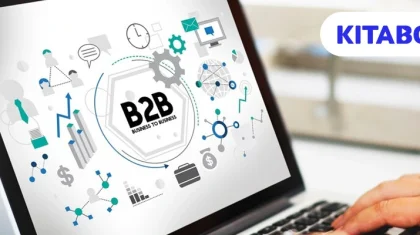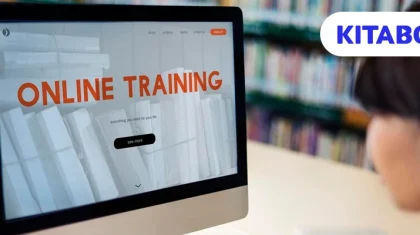
Interactive Content Builder: Unleashing the Power of Engaging Content
Today, a growing number of businesses are making the shift from publishing static content to interactive content to help enrich the user experience.
In 2023, 36.1% of businesses utilized interactive tools such as calculators and quizzes, a percentage that rose to 62.3% by 2024. This demonstrates a notable increase in businesses embracing interactive content within just one year.
Whether you’re a publisher or a brand, today’s users crave interactivity and dynamic experiences, especially in education, content marketing, and beyond. However, creating interactive content demands an investment in technology.
Brands need access to an efficient, cost-effective, secure, and measurable way to do so. This is where the use of automated AI-powered interactive content builder software can help. They not only boost the creation of engaging interactive content but also streamline the process, making it more accessible and manageable for businesses.
Table of Contents:
I. Understanding Interactive Content Creation Tools
II. 8 Ways to Build Engaging Interactive Content
- Utilize Multimedia Elements
- Gamify Your Content
- Use Widgets
- Build Simulated Experiences
- Leverage AI Tools
- Produce Interactive eBooks
- Introduce Interactive/ Community Features
- Build Accessible Content
II. To Wrap Up
Understanding Interactive Content Creation Tools
An interactive content creator, also referred to as an interactive content builder, is an innovative software solution that enables publishers to build high-quality, interactive content in a streamlined, creative, and cost-effective manner.
This software automates the process of interactive content creation, using various elements such as multimedia, gamification, Artificial Intelligence (AI) powered content, live simulations, and community to build immersive, engaging experiences for users.
Today, educational content publishers, for instance, are leveraging the benefits of automated digital textbook platforms like KITABOO, to increase engagement and improve learning outcomes.
8 Ways to Build Engaging Interactive Content
The use of a superior interactive content builder enables publishers to incorporate high-quality interactive features into their content products.
Here are eight effective strategies to achieve this:
1. Utilize Multimedia Elements
Publishers can support multimedia elements in content to add more diversity. Popular multimedia elements include videos, audio representations, slides, infographics, GIFs, and podcasts. This wide range of content formats enables users to engage with content in multiple ways, thus widening audiences.
The use of bite-sized videos, for instance, has helped make learning more consumable, propelling the trend of micro-learning; learners dedicate time to learning for a few minutes every day.
The adoption of the automated digital textbook platform KITABOO enables publishers to incorporate multimedia content with ease into their content products.
2. Gamify Your Content
The popularity of gaming has led to the usage of game elements in non-gaming contexts such as education, professional skills training, eBooks, and content marketing.
Publishers can capitalize on this opportunity and leverage interactivity to build highly differentiated gamified content products. The introduction of challenges, leaderboards, and rewards, for instance, enables education publishers to deliver experiences that motivate learners to deliver their best and thrive through healthy competition.
3. Use Widgets
Publishers today can incorporate a wide spectrum of widgets based on their relevance to the content. A widget is an application that helps perform a specific function. For instance, calculators can be used in Science and Math content, on the one hand, and personal finance content, on the other.
A hotspot is another popular widget that enables users to view a pop-up in the form of video, audio, or text with a single click on an image. Other popular widgets include feedback, split whiteboards & worksheets, 3D models, and image carousels.
4. Build Simulated Experiences
Live environments give users a hands-on experience that can be immersive and highly engaging. Technologies like Virtual Reality (VR) and Augmented Reality (AR) help explore stimulating experiences and give users a taste of reality.
Simulated experiences can be used in the context of learning and training, travel, brand engagement, lifestyle experiences, and beyond. Such experiences can also be leveraged to assess the skill level of learners, job seekers, and professionals.
5. Leverage AI Tools
Advances in AI and Machine Learning (ML) are enabling publishers to automate data-driven content experiences.
For instance, AI-generated adaptive learning enables lessons to be generated based on the proficiency levels, learning capabilities, and preferences of learners.
Lessons can be automatically assessed, and feedback reports and scores are automatically generated. The use of AI chatbots is also growing in popularity; they can be used in the context of learning, brand engagement, and advisory purposes. These tools bring convenience to the user, helping them receive support and information 24/7.
6. Produce Interactive eBooks
The emergence of interactive eBooks, an important innovation in book publishing, has transformed the reading experience for users.
Users can not only read a book; they can also listen to it, search for relevant information, leave comments, and highlight their favorite topics.
Embedding multimedia elements such as videos, audio representations, slides, and podcasts and using VR/AR enables users to enjoy a diverse, immersive experience. Reading can also be a collaborative experience, where users can leave notes for each other and learn from each other’s observations.
7. Introduce Interactive/ Community Features
Another route to building interactivity in content products is to include functional and important features such as searching, making notes, and the ability to highlight text. Community features such as commenting, sharing, adding reviews, and saving important content are also growing in relevance and usefulness for users.
8. Build Accessible Content
Interactive content closes a very important gap in the market, serving users with disabilities, reading challenges, learning gaps, and language barriers.
The use of a superior interactive creator platform like KITABOO enables publishers to include a number of accessibility features and build inclusive content.
Publishers can introduce the read-aloud feature, which helps convert text into speech. The platform also enables easy publishing of content in languages that have a right-to-left script, removing language barriers for several audiences.
Moreover, users can customize font sizes and styles according to their preferences, enhancing readability and addressing diverse visual needs. By leveraging these accessibility features, publishers can ensure that their content is accessible to all users, catering to the various needs and challenges encountered by different audiences.
To Wrap Up
Investing in the right interactive content builder technology early on can give businesses an edge in capturing the market with evocative, high-impact content.
Aspects such as data-centricity, measurability, a superior viewing experience, personalization, and secure distribution play an equally important role in the success of interactive content.
With KITABOO, your digital publishing platform, you can support your company’s goal of creating, publishing, and distributing effective e-learning content with the correct technological solutions.
You can utilize our digital publishing platform hosted in the cloud, which is offered in both licensed (one-time purchase) and subscription versions.
Reach out to us for further details.
Discover how a mobile-first training platform can help your organization.
Kitaboo is a cloud-based platform to create, deliver & track mobile-first interactive training content.



